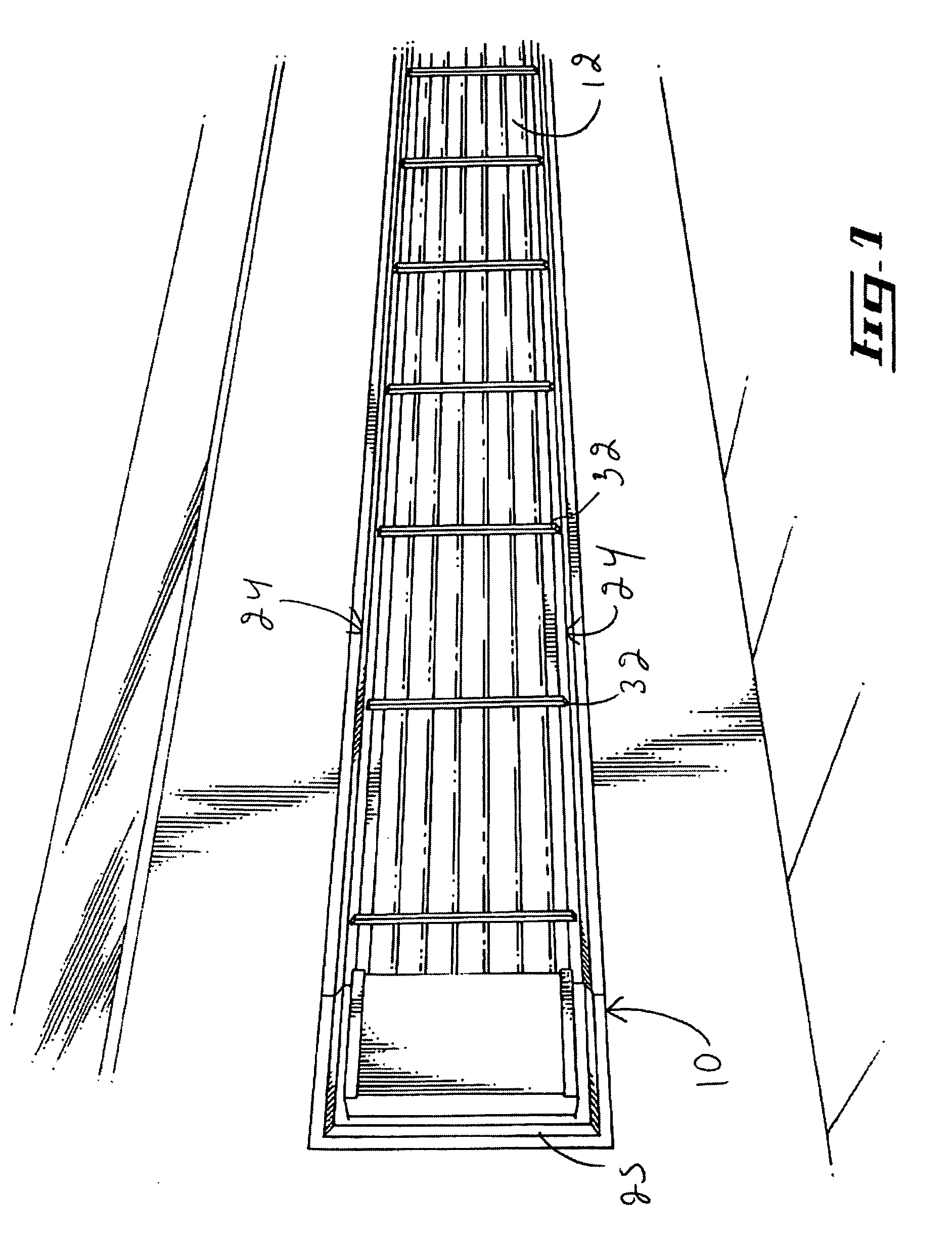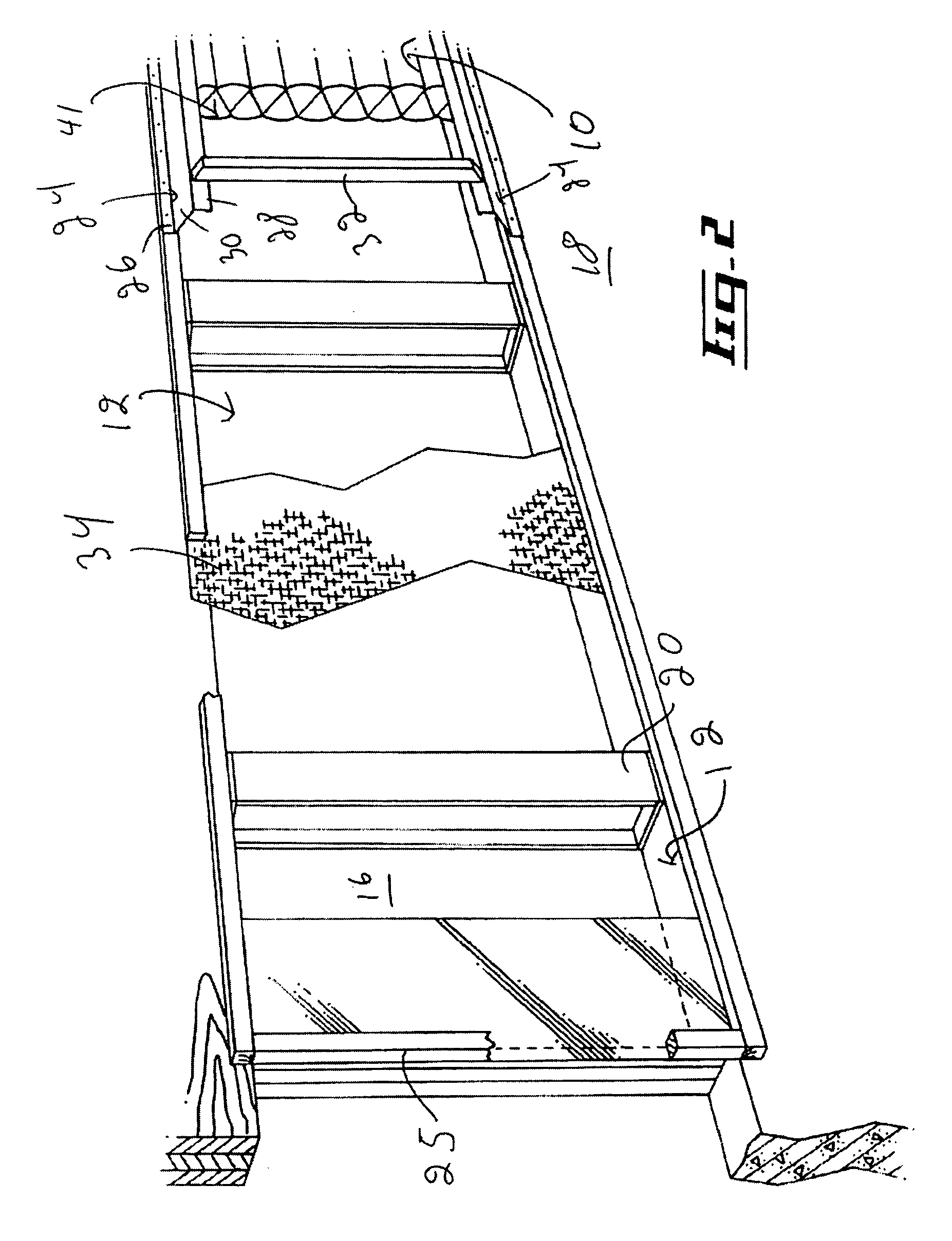Insulating panel
a technology of insulating panels and panels, applied in the field of building insulation, can solve the problems of compromising reducing the efficiency of the panel, so as to achieve the effect of reducing the potential of conduction and convective heat transfer modes, increasing the thermal insulating capacity of the panel, and reducing the synergy of conduction and convection loss
- Summary
- Abstract
- Description
- Claims
- Application Information
AI Technical Summary
Benefits of technology
Problems solved by technology
Method used
Image
Examples
Embodiment Construction
[0031]Referring to FIG. 1, there is shown an insulating panel in accordance with an embodiment of the present invention, generally indicated by the reference numeral 10. The insulating panel 10 is shown extending across a window aperture 12 defining an aperture plane extending substantially thereacross. As shown more specifically in FIG. 2, the window aperture 12 typically extends across a wall 14 such as a partition wall partitioning two rooms part of a building or an exterior wall delimiting the exterior of the building from its interior. It should, however, be understood that the insulating panel 10 could be used in other contexts for extending across other types of apertures of a building, such as for example doors or the like, without departing from the scope of the present invention.
[0032]The insulating panel 10 is typically used to thermally insulate two distinct environments. These two distinct environments are schematically referred to in FIG. 2 as a first environment 16 lo...
PUM
| Property | Measurement | Unit |
|---|---|---|
| membrane structure | aaaaa | aaaaa |
| heat loss | aaaaa | aaaaa |
| temperature | aaaaa | aaaaa |
Abstract
Description
Claims
Application Information
 Login to View More
Login to View More - R&D
- Intellectual Property
- Life Sciences
- Materials
- Tech Scout
- Unparalleled Data Quality
- Higher Quality Content
- 60% Fewer Hallucinations
Browse by: Latest US Patents, China's latest patents, Technical Efficacy Thesaurus, Application Domain, Technology Topic, Popular Technical Reports.
© 2025 PatSnap. All rights reserved.Legal|Privacy policy|Modern Slavery Act Transparency Statement|Sitemap|About US| Contact US: help@patsnap.com



